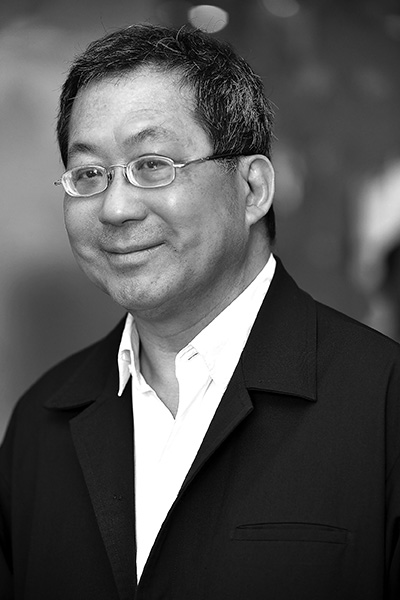Ken Yeang
September 26, 2019
It has been more than 10 years since FuturArc last spoke to Ken Yeang, who is essentially the O.G. of ecological design in Southeast Asia. He has been on the frontier of the industry for decades, behind projects such as Singapore’s National Library, Solaris, and more recently, Putrajaya 2C5 near Kuala Lumpur, Malaysia. His work centres on the integration of natural and constructed systems, and has been fundamental in pushing design boundaries in bioclimatic high-rise architecture, ecological master-planning and biomimicry. He has published 12 books, including titles such as The Green Skyscraper and Constructed Ecosystems, and was included in The Guardian’s “50 People Who Could Save The Planet” in 2008.
Yet, these days, he seems frustrated with how little progress the design industry has made in reshaping the built environment. He speaks with FuturArc’s correspondent Heather Banerd on the need to move beyond architecture and take a more radical approach, and why design alone can’t change the world.

HB: You’ve pioneered ecological design in Asia and paved the way for transformation of the design industry. What, in your view, is the importance of ecological design in Asia, and what does it demand of the designer?
KY: What we as human beings do is that we go on the earth and any part of the land, we fragment the earth into patches, into little pieces, and this destroys the habitat, the fragility of the ecosystem.
What I try to do is I reconnect nature, make nature whole again, not just within buildings but between buildings and the landscape. This is what we as human beings should be doing.
Our built environment is not just urbanism or buildings, but includes everything that we make as human beings. Right now, it is so distant and remote from nature that it is the cause of contamination, pollution and devastation
of the environment. Our built environment has to become like nature. That is, it has to have the properties and attributes of natural systems. So redesigning is not just about design. It means remaking and recovering our natural environment; it means reinventing what we do with it.
“Ecological design doesn’t start with designing buildings… What we should be doing is designing Green infrastructure, because once the infrastructure is Green, anything you add to it or connect to it makes it easy to become Green.”
HB: What impact can architecture have on the challenges Asian cities are facing today? How many ecological buildings can add up to create a real impact?
KY: For me, ecological design doesn’t start with designing buildings, because the impact of buildings is incremental, it’s piecemeal. They just do not contribute towards enhancing the environment. What we should be doing is designing Green infrastructure, because once the infrastructure is Green, anything you add to it or connect to it makes it easy to become Green. When you start incrementally at the other end of the scale, designing Green buildings without Green infrastructure, if it’s connected to the grid and the source of energy to the grid comes from burning fossil fuels, then it makes total nonsense in designing a Green building, or trying to design ecologically. If you want to be ecologically effective, you need to design at the regional scale, to design the structure that determines the physical systems of our built environment. We should look at it in terms of the totality of everything we do on the planet. So ecological design for me starts with infrastructure.
“Our social, economic and political systems are infrastructure, so we have to integrate this human infrastructure with nature’s infrastructure. That to me is the fault in most of these accreditation systems because they see human society as a very small factor; or worse, as indoor air quality. It’s really about human habits, behaviour, aspirations and ideology.”
“We have now reached what is called the ‘race and rescue’ mission stage. We have to rectify what we’ve done, to recover and rejuvenate the natural environment. This means reinventing what we do with the natural environment. Ecology has to drive the process and output of design.”
To read the complete article, get your hardcopy at our online shop/newsstands/major bookstores; subscribe to FuturArc or download the FuturArc App to read the issues!
Previously Published FuturArc Interview
Contact us at https://www.futurarc.com/contact-us for older interviews.

